Standard Precautions involve the use of safe work practices and protective barriers including :

The type of Personal Protective Equipment (PPE) used will vary based on the level of precautions required.
Hand hygiene

Hand hygiene is the single most important practice to reduce the transmission of infectious agents in healthcare settings.12 The term “hand hygiene” includes both hand washing with running water and either plain or antimicrobial-containing liquid soap or the use of water-free skin cleansers or antimicrobials such as alcohol-based products. Hands must be cleaned with soap and running water if visibly soiled or in circumstances where antimicrobial water-free skin cleansers are demonstrated to be inadequate, such as caring for patients with
Clostridium difficile
Situations requiring hand hygiene 
- when starting and finishing work
- before and after going to the toilet, smoking and eating
- if skin is contaminated or visibly soiled with body substances
- following contact with own mucous membranes (eg blowing nose, sneezing or coughing into hands)
- following contact with non intact skin, and/or abnormal skin conditions (rashes)
- before donning gloves and after removing gloves
- before and after removing facial and eye protection (eg mask, shield or visor)
- after removing a gown or apron
- before and after patient care procedures
- between different procedures on the same patient
- before and after direct patient contact
- after touching inanimate objects that are likely to be contaminated (eg computer keyboards, medical record notes, telephone, bed rails, urinals, bed pans)
- prior to food preparation, infant formula preparation, handling patient food or feeding patients
- after touching animals
| Type | Duration | Skin cleaning products |
| Routine/social |
10-15 seconds |
Non-antimicrobial liquid soap and water to remove transient micro-organisms. |
| 10-15 seconds,And until dry |
Water-free skin cleanser (alcohol based) hand rub, gel or foam. Rub vigorously over all surfaces allow product to completely dry on hands without wiping. |
| Procedural (non-surgical procedures) |
30-60 seconds |
Antimicrobial liquid soap and water, prior to invasive and aseptic |
| 30 seconds minimum |
Alcohol based water free skin cleanser (must have a proven residual affect) |
| Surgical |
5 minutes prior to first operative procedures for the day, then 3 minutes prior to subsequent operative procedures |
Antimicrobial liquid soap and water. |
Drying hands
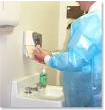
Hands must be dried after washing as the residual moisture left on the hands may harbor bacteria. Alcohol based water-free skin cleansers must be allowed to dry (evaporate) appropriately by rubbing vigorously. The wearing of gloves does not eliminate the need for hand hygiene. Gloves cannot be guaranteed to provide complete protection against viral or bacterial contamination of the hands. Cover cuts and abrasions on exposed skin with a water-resistant occlusive dressing.
The dressing used should be changed as necessary or when it becomes soiled, loose, damp or damaged. Healthcare workers involved in direct patient care, sterilizing services and laboratory staff must not wear artificial fingernails, nail extenders or any nail enhancements (e.g. painting, varnish or nail art).
All hand and wrist jewellery must be kept to a minimum during direct patient care. Rings with large or multiple settings or detailed scrollwork must not be worn during direct patient contact. Wrist jewellery must be easily removed for hand hygiene and patient activity, and must not be worn for invasive procedures.
All patients must be provided with the means to perform hand hygiene. Patients should be encouraged to perform hand hygiene before eating, after going to the toilet or using a bedpan or urinal, after smoking, whenever hands are visibly soiled, after sneezing/coughing into hands, and after touching animals. Visitors should be encouraged to perform hand hygiene on entering and leaving a ward, after smoking, after sneezing/coughing into hands, and as appropriate before and after lending assistance with their relative or friend who is a patient.
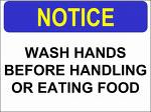
Gloves are worn as a barrier to protect the wearer’s hands from contamination or to prevent the transfer of organisms already on the hands. Gloves must be worn on both hands and must be used in situations where the healthcare worker is potentially exposed to blood and/or body substances, in particular:
- during any procedure where direct contact is anticipated with a patient’s blood or body substances, mucous membranes or non-intact skin
- while handling items or surfaces that have come into contact with blood or body substances
- while performing an invasive procedure, venepuncture or a finger or heel stick
- during contact precautions
Gloves need not be worn for subcutaneous, intramuscular or intradermal injection unless exposure to blood is anticipated.
Sterile gloves must be worn if the procedure involves contact with tissue that would be sterile under normal circumstances.
Medical examination gloves that must be used for all procedures that involve direct or perceived contact with non-intact skin, mucous membranes and blood or body substances.
Gloves must be changed and discarded:
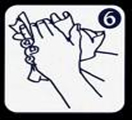
- as soon as they are torn or punctured or when the integrity has been altered
- after contact with a patient is complete and before care is provided to another patient
- when performing separate procedures on the same patient
- after completing a task not involving patients but requiring gloves
- before touching environmental items and surfaces
- before or on leaving a patient’s room
- before writing in the medical notes, answering the telephone, using the computer and moving or touching equipment.
Hand hygiene is performed immediately after removing gloves to avoid transfer of micro-organisms to other persons or environments. Disposable gloves must never be reused.
Facial protection

As part of standard precautions a fluid-resistant mask or face shield must be worn while performing any procedure where there is a likelihood of splashing or splattering of blood or body substances. A fluid resistant surgical mask must be worn in surgery or for invasive and dental procedures, to prevent blood or body substance splashes.
A mask must :
- be worn and fitted in accordance with the manufacturer’s instructions
- not be touched by hands while worn
- cover both the mouth and nose while worn
- not be worn loosely or folded down around the neck.
A mask must be discarded once it has been worn, or becomes visibly soiled or moist, and must not be used again. When the mask becomes moist from the wearer, or from contamination, the barrier has been breached and the mask is no longer effective. A mask must be removed by touching the strings/ties or loops only.
Protective eyewear (goggles, face visors/shields)

As part of standard precautions, protective eyewear or a face visor/shield must be worn while performing any procedure where there is a risk of splashing or splattering of blood or body substances.
General prescription glasses do not comply with these standards and, therefore protective eyewear must be worn in addition to prescription glasses if there is a likelihood of being splashed with blood or body substances, and for implementation of droplet precautions.
Reusable protective eyewear and face visors/shields must be cleaned in accordance with the manufacturer’s instructions after use and stored clean and dry. Protective eyewear labeled single use must not be reused.
Gown/apron
A fluid-resistant gown or apron made of impervious material provides a barrier to reduce opportunities for transmission of pathogens in healthcare settings.
A fluid-resistant gown or apron made of impervious material must be worn :

- during any procedure where there is a likelihood of splashes or contamination with blood or other body substances
- on entering an isolation room during contact precautions, if contact with the patient or the patient’s environment is likely, and removed before or immediately on exiting the room. The gown/apron is then disposed into the general waste, providing it is not contaminated with blood or body substances
- as a protective layer under a sterile gown that is not made of impervious material, when there is the chance of splash or splatter
- underneath a sterile cloth gown when performing invasive procedures, especially if it involves the likelihood of splashes or contamination with blood or other body substances.
Appropriate handling of laundry

Linen soiled with blood, body substances, secretions, and excretions must be handled, transported and processed in a manner that prevents skin and mucous membrane exposures, contamination of clothing, and transfer of micro-organisms to healthcare workers, other patients and associated environments.
Respiratory hygiene/cough etiquette
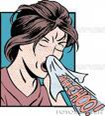
All people with signs or symptoms of a respiratory infection, regardless of presumed cause, should be instructed to :
- cover the nose/mouth when coughing or sneezing with a tissue
- use tissues to contain respiratory secretions
- spit into tissue, if spitting is necessary
- dispose of tissues in the nearest rubbish bin after use
- perform hand hygiene after contact with respiratory secretions and contaminated objects or materials
- wear a surgical mask (if coughing or sneezing, when being transported, or to protect other persons in a common waiting area).
Healthcare workers must:
- be medically assessed by their doctor if they have a persistent cough and practice respiratory hygiene/ cough etiquette
- encourage all persons to perform respiratory hygiene/cough etiquette
- participate in infection control education programs to minimize airborne and droplet transmission of diseases in the healthcare setting
- attend specific training in the use of PPE.
| Requirements | Standard precautions
All persons, blood (including dried blood); all body substances, secretions and excretions (excluding sweat); non-intact skin; and mucous membranes including eyes.
|
| Single room |
No |
| Negative pressure |
No |
| Hand hygiene |
Yes |
| Gloves |
Protect hands if anticipated contact with blood and body substances. |
| Gown/ apron |
Protect clothing where soiling or splashing is likely. |
| Mask |
Protect face using a surgical mask if splash or aerosol likely. |
| Protective eyewear |
Protect eyes if splash likely or where aerosol may be generated. |
| Special handling of equipment |
Gloves for handling equipment contaminated with blood and body substances. Avoid contaminating environmental surfaces and equipment with used gloves. |
| Transport of patient |
Cover all patient’s open wounds. Surgical mask if coughing/sneezing and other signs and symptoms of an infectious transmissible disease spread by airborne or droplet route. |
| Alert |
Respiratory hygiene for coughing and sneezing patients suspected of having an infectious respiratory illness. Exposures to blood/body substance – immediately wash site, promptly notify supervisor and seek management of exposure. Handle needles, syringes and sharps with care. Use approved rigid sharps containers for disposal. DO NOT recap, break or bend needles. |
| cleaning |
Standard cleaning protocol. |
Precautions will be referred to as Additional Precautions. These precautions are designed for patients known or suspected to be infected with pathogens for which additional precautions, in addition to Standard Precautions, are needed to interrupt transmission of those pathogens in health organisations.
There are three types of Additional Precautions:
- Airborne precautions
- Droplet precautions
- Contact precautions.
Immunocompromised patients vary in their susceptibility to healthcare associated infections, depending on the severity and duration of immunosuppression. These patients generally are at increased risk for bacterial, fungal, parasitic, and viral infections from both endogenous and exogenous sources.
Where a patient is known or suspected to be infected with such a pathogen, Additional Precautions should remain in effect until pathology results document absence of the pathogen or until effective treatment has been commenced and continued for the appropriate period of time.
| Requirements | Airborne precautions |
| Single room |
 Yes Yes
Door closed
It is recommended that single patient rooms be fitted with ensuite facilities.In the advent of no ensuite facilities, a toilet and bathroom should be dedicated for individual patient use. |
| Negative pressure |
Yes,
if available otherwise single room with door closed and window open. |
| Hand hygiene |
Yes |
| Gloves |
Standard precautions |
| Gown/ apron |
Standard precautions |
| Mask |
Yes,
P2 Mask (perform fit check prior to entering room) Remove mask after leaving patient room. |
| Protective eyewear |
Standard Precautions |
| Special handling of equipment |
Standard Precautions
Avoid contaminating environmental surfaces and equipment with used gloves. |
| Transport of patient |
 Surgical mask for patient when they leave the room Patients on oxygen therapy must be changed to nasal prongs and have a surgical mask over the top of the nasal prongs for transport (if medical condition allows). Advise transport staff of level of precautions to be maintained. Surgical mask if coughing/sneezing and other signs and symptoms of an infectious transmissible disease spread by airborne or droplet route. Notify area receiving patient. Surgical mask for patient when they leave the room Patients on oxygen therapy must be changed to nasal prongs and have a surgical mask over the top of the nasal prongs for transport (if medical condition allows). Advise transport staff of level of precautions to be maintained. Surgical mask if coughing/sneezing and other signs and symptoms of an infectious transmissible disease spread by airborne or droplet route. Notify area receiving patient. |
| Alert |
Visitors to patient room must also wear P2 mask and perform hand hygiene. Patient Medical Records must not be taken into the room. Signage of room. |
| cleaning |
Standard cleaning protocol. May require additional cleaning with a disinfectant agent depending on organism. Consult with infection control professional. |
Airborne precautions

Airborne Precautions apply to patients known or suspected to be infected with pathogens that can be transmitted by the airborne route and are designed to reduce the risk of airborne transmission of infectious agents. Airborne transmission occurs by dissemination of either airborne droplet nuclei (small-particle residue [5μm or smaller in size] of evaporated droplets that may remain suspended in the air for long periods of time) or dust particles containing the infectious agent. Patients for whom airborne precautions are required should be cared for in a negative pressure room.
Droplet precautions
Droplet Precautions apply to any patient known to be or suspected of being infected with pathogens that can be transmitted by the droplet route and are designed to reduce the risk of droplet transmission of infectious agents.
Respiratory droplets are generated when a patient coughs, sneezes, talks or during procedures such as suctioning and chest physiotherapy. Transmission via large-particle droplets (larger than 5μm in size) requires close contact between source and recipient persons, because droplets do not remain suspended in the air and generally travel only short distances, usually one meter or less, through the air. Droplet transmission involves contact of the conjunctivae or the mucous membranes, of the nose or mouth, of a susceptible person Because droplets do not remain suspended in the air, special air handling and ventilation are not required to prevent droplet transmission.
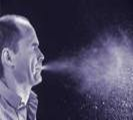
Patient placement for droplet precautions :
- place the patient in a private (isolation) room;
- when a private room is not available, cohort a patient in a room with a patient(s) who have active infection with the same microorganism but with no other infection.
- when a private room is not available and cohorting is not achievable, maintain spatial separation of at least one meter between the infected patient and other patients and visitors.81
| Requirements | Droplet precautions |
| Single room |
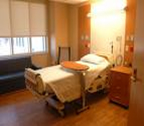 Yes, or Cohort with patient with same pathogen (in consultation with infection control professional, or infectious diseases physician), or Maintain spatial separation of at least one meter It is recommended that single patient rooms be fitted with ensuite facilities. In the advent of no ensuite facilities, a toilet and bathroom should be dedicated for individual or cohort patient use. Yes, or Cohort with patient with same pathogen (in consultation with infection control professional, or infectious diseases physician), or Maintain spatial separation of at least one meter It is recommended that single patient rooms be fitted with ensuite facilities. In the advent of no ensuite facilities, a toilet and bathroom should be dedicated for individual or cohort patient use. |
| Negative pressure |
No |
| Hand hygiene |
Yes |
| Gloves |
Standard precautions |
| Gown/ apron |
Standard precautions |
| Mask |
 Yes Surgical mask. Yes Surgical mask.
Remove mask after leaving patients room. |
| Protective eyewear |
Yes |
| Special handling of equipment |
Standard Precautions |
| Transport of patient |
Surgical mask if coughing/sneezing and other signs and symptoms of an infectious transmissible disease spread by airborne or droplet route. Surgical mask for patient when they leave the room. Patients on oxygen therapy must be changed to nasal prongs and have a surgical mask over the top of the nasal prongs for transport (if medical condition allows). Advise transport staff of level of precautions to be maintained. Notify area receiving the patient. |
| Alert |
When cohorting patients, they require minimum of one meter of patient separation. Visitors to patient room must wear a fluid resistant surgical mask and protective eyewear (if unable to maintain 1 meter distance) and perform hand hygiene.Patient Medical Records must not be taken into the room. Signage of room. |
| cleaning |
 Standard cleaning protocol. May require additional cleaning with a disinfectant agent depending on organism. Consult with infection control professional. Standard cleaning protocol. May require additional cleaning with a disinfectant agent depending on organism. Consult with infection control professional. |
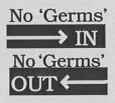
Contact Precautions are designed to reduce the risk of transmission of micro-organisms by direct and/or indirect contact.
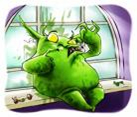
Transmission may occur via direct contact or indirect contact.13,16,28 Involves skin-to-skin contact and physical transfer of micro-organisms directly from one person to another person, such as when healthcare workers reposition, bathe or perform other patient care activities that require physical contact. Direct contact transmission can also occur between two patients (e.g. by hand contact), with one serving as the source of infectious micro-organisms and the other as a susceptible host.
Indirect contact transmission Involves transfer of an infectious agent, through a contaminated intermediate object or person. Hands of healthcare personnel are usually cited as the most important contributors to indirect contact transmission, via the environment and fomites.















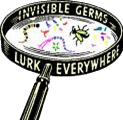

 Hand hygiene is the single most important practice to reduce the transmission of infectious agents in healthcare settings.12 The term “hand hygiene” includes both hand washing with running water and either plain or antimicrobial-containing liquid soap or the use of water-free skin cleansers or antimicrobials such as alcohol-based products. Hands must be cleaned with soap and running water if visibly soiled or in circumstances where antimicrobial water-free skin cleansers are demonstrated to be inadequate, such as caring for patients with Clostridium difficile
Hand hygiene is the single most important practice to reduce the transmission of infectious agents in healthcare settings.12 The term “hand hygiene” includes both hand washing with running water and either plain or antimicrobial-containing liquid soap or the use of water-free skin cleansers or antimicrobials such as alcohol-based products. Hands must be cleaned with soap and running water if visibly soiled or in circumstances where antimicrobial water-free skin cleansers are demonstrated to be inadequate, such as caring for patients with Clostridium difficile
 Hands must be dried after washing as the residual moisture left on the hands may harbor bacteria. Alcohol based water-free skin cleansers must be allowed to dry (evaporate) appropriately by rubbing vigorously. The wearing of gloves does not eliminate the need for hand hygiene. Gloves cannot be guaranteed to provide complete protection against viral or bacterial contamination of the hands. Cover cuts and abrasions on exposed skin with a water-resistant occlusive dressing.
Hands must be dried after washing as the residual moisture left on the hands may harbor bacteria. Alcohol based water-free skin cleansers must be allowed to dry (evaporate) appropriately by rubbing vigorously. The wearing of gloves does not eliminate the need for hand hygiene. Gloves cannot be guaranteed to provide complete protection against viral or bacterial contamination of the hands. Cover cuts and abrasions on exposed skin with a water-resistant occlusive dressing. Gloves are worn as a barrier to protect the wearer’s hands from contamination or to prevent the transfer of organisms already on the hands. Gloves must be worn on both hands and must be used in situations where the healthcare worker is potentially exposed to blood and/or body substances, in particular:
Gloves are worn as a barrier to protect the wearer’s hands from contamination or to prevent the transfer of organisms already on the hands. Gloves must be worn on both hands and must be used in situations where the healthcare worker is potentially exposed to blood and/or body substances, in particular:
 As part of standard precautions a fluid-resistant mask or face shield must be worn while performing any procedure where there is a likelihood of splashing or splattering of blood or body substances. A fluid resistant surgical mask must be worn in surgery or for invasive and dental procedures, to prevent blood or body substance splashes.
As part of standard precautions a fluid-resistant mask or face shield must be worn while performing any procedure where there is a likelihood of splashing or splattering of blood or body substances. A fluid resistant surgical mask must be worn in surgery or for invasive and dental procedures, to prevent blood or body substance splashes. As part of standard precautions, protective eyewear or a face visor/shield must be worn while performing any procedure where there is a risk of splashing or splattering of blood or body substances.
As part of standard precautions, protective eyewear or a face visor/shield must be worn while performing any procedure where there is a risk of splashing or splattering of blood or body substances.
 Linen soiled with blood, body substances, secretions, and excretions must be handled, transported and processed in a manner that prevents skin and mucous membrane exposures, contamination of clothing, and transfer of micro-organisms to healthcare workers, other patients and associated environments.
Linen soiled with blood, body substances, secretions, and excretions must be handled, transported and processed in a manner that prevents skin and mucous membrane exposures, contamination of clothing, and transfer of micro-organisms to healthcare workers, other patients and associated environments. All people with signs or symptoms of a respiratory infection, regardless of presumed cause, should be instructed to :
All people with signs or symptoms of a respiratory infection, regardless of presumed cause, should be instructed to : Yes
Yes Surgical mask for patient when they leave the room Patients on oxygen therapy must be changed to nasal prongs and have a surgical mask over the top of the nasal prongs for transport (if medical condition allows). Advise transport staff of level of precautions to be maintained. Surgical mask if coughing/sneezing and other signs and symptoms of an infectious transmissible disease spread by airborne or droplet route. Notify area receiving patient.
Surgical mask for patient when they leave the room Patients on oxygen therapy must be changed to nasal prongs and have a surgical mask over the top of the nasal prongs for transport (if medical condition allows). Advise transport staff of level of precautions to be maintained. Surgical mask if coughing/sneezing and other signs and symptoms of an infectious transmissible disease spread by airborne or droplet route. Notify area receiving patient. Airborne Precautions apply to patients known or suspected to be infected with pathogens that can be transmitted by the airborne route and are designed to reduce the risk of airborne transmission of infectious agents. Airborne transmission occurs by dissemination of either airborne droplet nuclei (small-particle residue [5μm or smaller in size] of evaporated droplets that may remain suspended in the air for long periods of time) or dust particles containing the infectious agent. Patients for whom airborne precautions are required should be cared for in a negative pressure room.
Airborne Precautions apply to patients known or suspected to be infected with pathogens that can be transmitted by the airborne route and are designed to reduce the risk of airborne transmission of infectious agents. Airborne transmission occurs by dissemination of either airborne droplet nuclei (small-particle residue [5μm or smaller in size] of evaporated droplets that may remain suspended in the air for long periods of time) or dust particles containing the infectious agent. Patients for whom airborne precautions are required should be cared for in a negative pressure room.
 Yes, or Cohort with patient with same pathogen (in consultation with infection control professional, or infectious diseases physician), or Maintain spatial separation of at least one meter It is recommended that single patient rooms be fitted with ensuite facilities. In the advent of no ensuite facilities, a toilet and bathroom should be dedicated for individual or cohort patient use.
Yes, or Cohort with patient with same pathogen (in consultation with infection control professional, or infectious diseases physician), or Maintain spatial separation of at least one meter It is recommended that single patient rooms be fitted with ensuite facilities. In the advent of no ensuite facilities, a toilet and bathroom should be dedicated for individual or cohort patient use. Yes Surgical mask.
Yes Surgical mask. Standard cleaning protocol. May require additional cleaning with a disinfectant agent depending on organism. Consult with infection control professional.
Standard cleaning protocol. May require additional cleaning with a disinfectant agent depending on organism. Consult with infection control professional. Contact Precautions are designed to reduce the risk of transmission of micro-organisms by direct and/or indirect contact.
Contact Precautions are designed to reduce the risk of transmission of micro-organisms by direct and/or indirect contact. Transmission may occur via direct contact or indirect contact.13,16,28 Involves skin-to-skin contact and physical transfer of micro-organisms directly from one person to another person, such as when healthcare workers reposition, bathe or perform other patient care activities that require physical contact. Direct contact transmission can also occur between two patients (e.g. by hand contact), with one serving as the source of infectious micro-organisms and the other as a susceptible host.
Transmission may occur via direct contact or indirect contact.13,16,28 Involves skin-to-skin contact and physical transfer of micro-organisms directly from one person to another person, such as when healthcare workers reposition, bathe or perform other patient care activities that require physical contact. Direct contact transmission can also occur between two patients (e.g. by hand contact), with one serving as the source of infectious micro-organisms and the other as a susceptible host.
